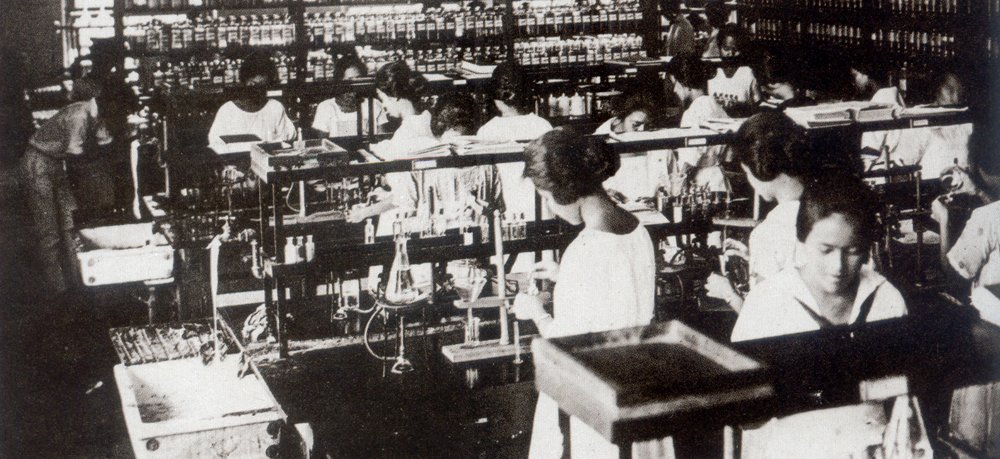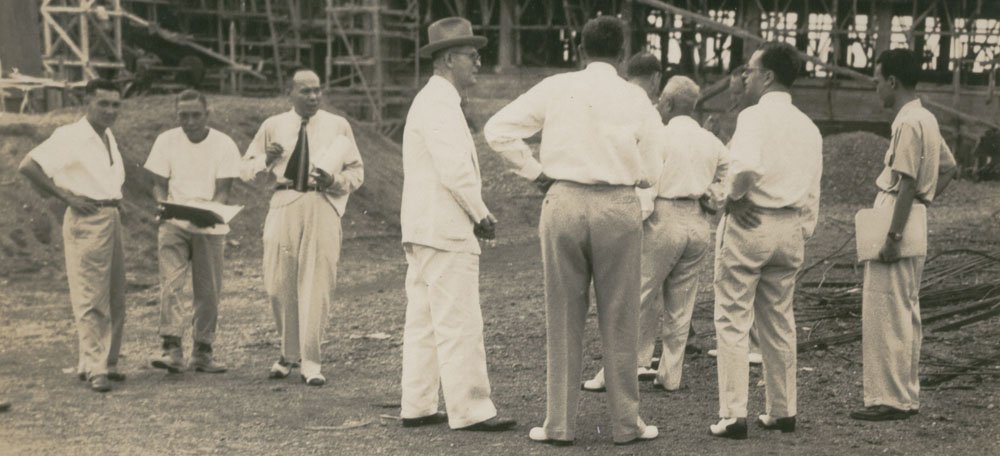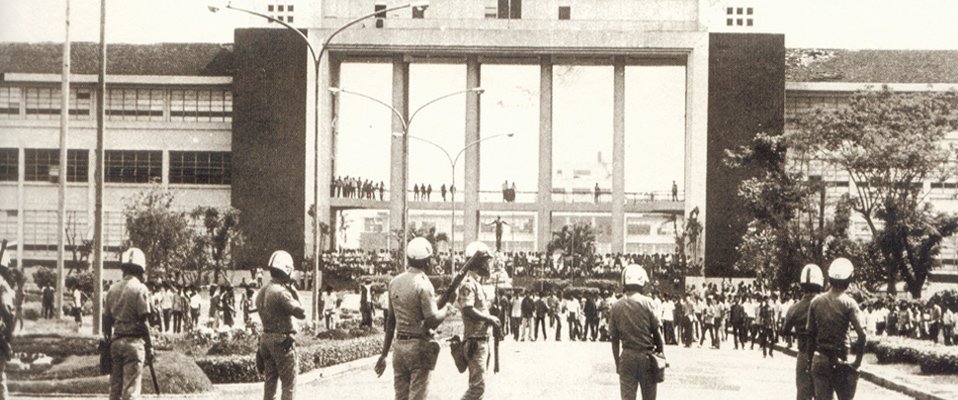On June 18, 1908, a hundred and fifteen years ago, the ����̽̽ (����̽̽) was founded through Act No. 1870 of the Philippine Assembly. ����̽̽ was the result of the recommendation of Secretary of Public Instruction, William Morgan Shuster to the Philippine Commission, the upper house of the Philippine Assembly. It was meant to fill the need to meet the increasing demands for instruction in the higher levels of learning and to provide professional studies in medicine, law, engineering or applied sciences.
Act No. 1870 authorized the Governor General to establish the University in the “city of Manila, or at any point he may deem most convenient.” The ����̽̽ was to give “advanced instruction in literature, philosophy, the sciences and arts, and to give professional and technical training” to every qualified student regardless of “age, sex, nationality, religious belief and political affiliation.”
According to ����̽̽’s Bulletin No. 1, the University was seen as “the logical outgrowth and culmination of efforts made during the past ten years to establish a complete system of education for the Philippine islands.”
Over the past one hundred years, the ����̽̽ has evolved from the pinnacle of the American-established educational system in the country, to a “University for the Filipino” as envisioned by its first president, Murray Simpson Bartlett.

The early years
����̽̽ first opened on Calle Isaac Peral (now United Nations Avenue) and Padre Faura in downtown Manila in 1909, with: the College of Medicine (which, as the Philippine Medical School established in 1905, predated the University by three years); the School of Fine Arts (1909); the College of Liberal Arts (1909); the College of Veterinary Medicine (1910); the College of Engineering (1910); the College of Law (1910); and, the College of Agriculture in Los Baños, Laguna (1906).
The ����̽̽ president at that time, Murray Bartlett, vowed that, as a “University for the Filipino,” ����̽̽ must be “supported by the people’s money,” with a charter framed by the people’s representatives and “its hope based on the confidence and sympathy of the people.”

In 1915, a lawyer, Ignacio Villamor, would be chosen president of the University. He would be the first Filipino to lead what had by that time grown to become the Philippines’ premier higher educational institution. Under Villamor, ����̽̽ continued to grow with the addition of units such as: the Conservatory of Music; the University High School; the College of Education; and, the Junior College in Cebu City.
In 1935, ����̽̽’s famous statue, the Oblation, was installed at the Manila campus. The statue was the creation of National Artist Guillermo Tolentino and inspired by his interpretation of the second stanza of Dr. Jose Rizal’s “Mi Ultimo Adios.”

The Transfer to Diliman
The Second World War saw the destruction of several buildings of ����̽̽ in Manila, Los Baños, Cebu, and Iloilo. In 1947, the Philippine General Hospital formally became a part of ����̽̽ through Executive Order No. 94. In 1948, under the stewardship of ����̽̽ President Bienvenido Gonzales, much of ����̽̽ was transferred from its campus in Manila to a bigger campus in Diliman, Quezon City.
The 50’s and 60’s saw the transformation of ����̽̽ from the brainchild of American hopes and dreams for the Philippines into a bastion of intense nationalism. ����̽̽ President Vicente Sinco preserved the University’s integrity from communist paranoia and partisan politics, while ����̽̽ President Carlos P. Romulo introduced Filipinism, student activism and faculty dissent.

The First Quarter Storm
����̽̽ President Salvador P. Lopez would see the culmination of ����̽̽’s freedom-loving, activist spirit facing off against a rising autocracy, from the events of the first quarter of the year 1970, now dubbed the “First Quarter Storm,” to 1971 when the Diliman Republic become the Diliman Commune. From January to February, the campus became a battleground between militant students protesting the deteriorating conditions of the country, and policemen.
The students completely barricaded the campus and established full control of the facilities. There were several attempts by the police to mount an assault on the campus, but they were unsuccessful. The student barricades at Palma Hall and the University Avenue in the Diliman campus rose again during the time of ����̽̽ President Edgardo Angara, this time in protest against a tuition hike.
The nationalist and activist spirit of the First Quarter Storm would continue to burn within the University through the succeeding decades, firmly establishing ����̽̽ as the bulwark of critical thinking and free speech, and a haven for the voiceless and marginalized. A new call arose to counter state authoritarianism and foreign intrusion in the country’s state of affairs: “Serve the people.”

Development and expansion
The University continued to develop and expand through the years, even as it navigated through the conditions of a dictatorship. Development-oriented programs and institutions were established, such as: the Institute for Small-Scale Industries, the Population Institute, and the Asian Labor Education Center (now the School of Labor and Industrial Relations) in ����̽̽ Diliman, and the Dairy Training and Research Institute in ����̽̽ Los Baños, all of which were founded during the time of ����̽̽ President Romulo.
Also established were: during the term of ����̽̽ President Lopez, the Agrarian Reform Institute at the College of Agriculture, the Institute of Social Work and Community Development, the Philippine Center for Economic Development, the Institute of Fisheries Development and Research, and the Marine Sciences Center; the Institute of Agricultural Engineering and Technology, the Transport Training Center, the National Institute of Biotechnology and Microbiology, and the Third World Studies Program during the succeeding terms of ����̽̽ Presidents Onofre D. Corpuz and Emanuel V. Soriano; and, the National Institute of Geological Sciences, the Natural Sciences Research Institute, the National Institute of Physics, and the Center for Integrative and Development Studies, under ����̽̽ President Edgardo J. Angara.
By the mid-70s, ����̽̽ had become a multi-campus University, with ����̽̽ Los Baños granted autonomy in 1973; the Health Science Center in ����̽̽ Manila, in 1977; and ����̽̽ Visayas, in 1979. ����̽̽ Diliman would be declared an autonomous campus in 1985 retroactive to 1981. Other ����̽̽ campuses included: ����̽̽ College Baguio, ����̽̽ College Cebu, ����̽̽ College Tacloban, ����̽̽ College in Clark Air Base, and ����̽̽ Extension in San Fernando, Pampanga.
Social transformation and service to the nation
Through the next two decades, ����̽̽ looked inward through constant self-examination and toward promoting social transformation that aimed to build a just, humane and democratic society. The review of academic programs and General Education programs were conducted so as to make these relevant and meaningful to the development of Philippine society, even as the University continued to expand. Student financial assistance and socialized tuition programs were established; issues in the use of the Filipino language were tackled; and programs to enrich Filipino culture and arts were expanded, parallel to the drive toward modernization and the focus on science and technology.
����̽̽ extended its resources and expertise to aid communities and regions affected by the massive earthquake of 1990 and the historic eruption of Mt. Pinatubo in 1991. Indeed, in the 1990s, ����̽̽ deepened its tradition of service to the nation by harnessing the spirit of volunteerism and selfless service through the Ugnayan ng Pahinungod or Oblation Corps. The University also sought to democratize access to ����̽̽ education by opening two more constituent universities in 1995: ����̽̽ Open University and ����̽̽ Mindanao.
A national university in the 21st century
As the world moved inexorably toward globalization, greater interconnectivity and a knowledge-based economy due to rapid advancements in information and communication technology, higher education institutions were compelled to rethink their roles. Under the successive terms of ����̽̽ Presidents Francisco Nemenzo, Emerlinda R. Roman, Alfredo E. Pascual, and Danilo L. Concepcion, ����̽̽ was no exception.
For the first two decades of the 21st century, physical infrastructure across all the constituent units were modernized so as to keep up with the evolving demands of the Information Age. This included: improving Internet and WiFi facilities for greater connectivity within and among the different constituent universities; automating libraries; conducting academic and administrative processes online; and, constructing and improving facilities and laboratories for teaching and research in science and technology, recognized as the drivers of economic development.
The academic infrastructure was also bolstered through improvements in faculty support, student assistance and accessibility, and through incentives for scientific and creative endeavors. The University’s General Education Program, which instilled and nurtured the Tatak ����̽̽ among its students, was continually reviewed and revised in light of the changing contexts and conditions of the 21st century. Internationalization also gained prominence, with ����̽̽ embracing accreditation and international benchmarking so as to fulfill its mandate to become a top regional and global higher education institution.
The year 2008 was a significant one for ����̽̽ for two reasons. First, it was the year the University celebrated its first 100th anniversary. And second, it was the year Republic Act No. 9500, “An Act to Strengthen the ����̽̽ as the National University,” was signed into law, amending Act No. 1870 and establishing ����̽̽ as the country’s national university. With this—and with ����̽̽ Baguio attaining the status of constituent university in 2002 and ����̽̽ Cebu in 2010—the ����̽̽ was redefined as the ����̽̽ System composed of constituent universities.
Changing paradigms, constant values
����̽̽ continues to grow and expand, building cutting-edge facilities and improving existing ones in order to create an optimal environment for learning and knowledge creation. Its community of scientists, researchers, experts, artists and humanists continue to put ����̽̽ on the global map of breaking and cutting-edge research, such as the discovery in 2019 of a new human species, the Homo luzonensis, by an international multidisciplinary team led by a ����̽̽ associate professor.
In keeping with ����̽̽’s mandate to serve the needs and aspirations of the Filipino people, ����̽̽ scientists and researchers continue to harness their research to meet the needs of and help develop Philippine industries, communities and the general public. ����̽̽ students also continue to win recognition in national and international circles in every field, from science and engineering to music and the arts.
����̽̽’s sustained efforts toward improving its teaching and pedagogy, its research environment and output, internationalization efforts and public service initiatives have borne fruit in its performance in recent world university rankings. In the 2020 Times Higher Education (THE) Asia University Rankings, ����̽̽ climbed 30 points from its position in 2019 to place 65th out of 489 universities.
Since 2017, the University has been featured in the THE Asia University Rankings, entering the top 100 for the first time in 2019, soaring 61 places from its 156th position in 2018. A year before that, ����̽̽ belonged to the 201st-250th ranking group.
����̽̽ has also appeared in the top 33 percent of the 2020 QS (Quacquarelli Symonds) World University Rankings, placing 356th in the top 1,000 institutions from around the world, and climbing 28 notches from the previous year to reach its highest standing since 2014. ����̽̽ continues to hold the top spot among Philippine universities.
The third function of a university—that of rendering extension service—has been greatly expanded and enhanced in ����̽̽. Through institutions such as the ����̽̽ Padayon Public Service Office, the ����̽̽ Resilience Institute and the Ugnayan ng Pahinungod, the University has become a public service institution fully conscious of its responsibility to produce ethical leaders, engage with communities, and translate the results of ����̽̽’s research into products and processes useful to people.
Into the third decade of the 21st century
Over the past 115 years, the ����̽̽ has proven itself worthy of the title of the country’s national university. Surviving world wars, colonial occupations, civil rights struggles and cultural upheavals, economic downturns and upsurges, ����̽̽ has played a role in shaping the nation’s political and social consciousness, and ultimately helping to define the national identity.
From the education of ordinary Filipinos under Americans at the time of ����̽̽ President Bartlett to its vision of being a digital national university under the stewardship of ����̽̽ President Angelo A. Jimenez, the University has produced: a Nobel Peace Prize winner; a Pulitzer Prize awardee; 39 National Scientists; 50 National Artists; nine National Social Scientists; seven out of the 16 Presidents of the Republic; 15 Chief Justices of the Supreme Court; and, tens of thousands of doctors, lawyers, engineers, teachers serving in the country and abroad, as well as hundreds of thousands of graduates in other academic fields.

In the face of a global pandemic in 2020, the University rose to this new and unprecedented challenge with its characteristic brilliance, courage, and a generosity of spirit, mobilizing resources and coming together as a nationwide and even global community to come to the aid of the country and its people.
����̽̽ scientists and engineers have created locally produced, accurate and affordable COVID-19 test kits, personal protective equipment, sanitation facilities, and much-needed sanitation chemicals. ����̽̽ social scientists and researchers have mapped the progression of the disease through the country, creating databases and generating research that would inform policy and decision-making on the national and local levels. ����̽̽ artists and musicians have shared works that inspire, give hope, and pay tribute to the country’s heroes.
����̽̽ students, alumni, administrators and residents have come together to help the members of the ����̽̽ community survive the viral outbreak and the quarantine. And ����̽̽’s doctors, nurses, and healthcare providers through the ����̽̽ Philippine General Hospital once again heroically serve those in need, in spite of the risks to life and well-being.
As people come to grips with the new realities in a world indelibly altered by the pandemic, as well as the resulting economic and geo-political upheavals, the country will once again look to ����̽̽. And the University, as it has done in the past 115 years, will once again answer the call to serve as: a bastion of knowledge, reason, ideas and insight; as a center for social transformation; and, as a University for the Filipino.
References:
The ����̽̽ Office of Alumni Relations
Alfonso, O.A. (Ed.). (1985). ����̽̽: The first 75 years (1908-1983). Quezon City: ����̽̽ Press.
Llanes, F. (Ed). (2009). ����̽̽ in the time of People Power. Diliman, Quezon City: ����̽̽ Press.
Roman, E.R. (2010). The ����̽̽ President’s End of Term Report. ����̽̽ System.
Pascual, A.E. (2017). One ����̽̽: Shaping Minds that Shape the Nation (The ����̽̽ President’s End of Term Report). ����̽̽ System.
����̽̽ Strategic Plan 2017-2023
